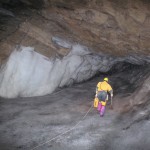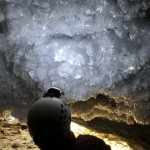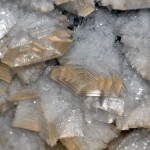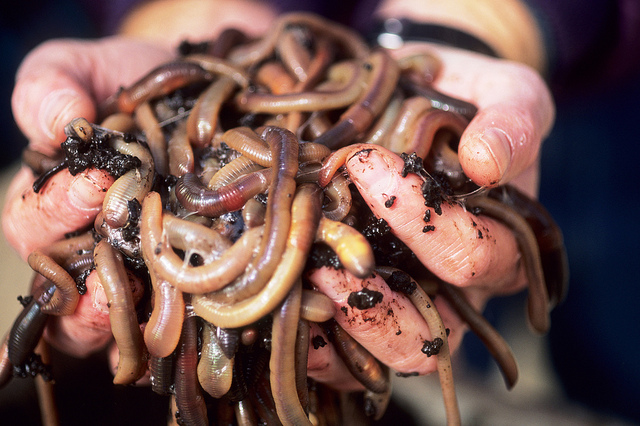Search Results for Tag: global warming
Keep to +2 degrees might not prevent permafrost from melting
- Large Ice Hall in Ledyanaya Lenskaya Cave located inside continuous permafrost (Photo: (C): Sebastian FM Breitenbach)
- Frost crystals at the entrance of Ledyanaya Lenskaya Cave (Photo (C): Vladimir V Alexioglo)
- Close up of frost crystals (Photo (C): Vladimir V Alexioglo)
Large parts of the Northern hemisphere from Alaska to China hold a dangerous treasure. 24 percent of this land’s ground is frozen throughout the year – so called permafrost. It holds more than 1,000 gigatons of the most dangerous greenhouse gases: carbon dioxide and methane. Release of those would accelerate climate change to great extend.
Now, researchers found evidence that permafrost could start melting already at a 1.5 degrees Celsius rise in temperature. Also, the world already warmed up by 0.6 to 0.7 degree Celsius compared to the preindustrial level. So adding another 0.8 could already let permafrost melt.
That’s at least what happened in former times, as the scientists from Britain, Russia, Mongolia and Switzerland found out. They went into Siberian caves located along the ‘permafrost frontier’ studying stalactites and stalagmites as they function as a kind of climate archive – they only grow when liquid rainwater and snow melt drips from the surface into the caves.
“The stalactites and stalagmites from these caves are a way of looking back in time to see how warm periods similar to our modern climate affect how far permafrost extends across Siberia”, said Dr Anton Vaks of Oxford University’s Department of Earth Sciences, who led the work.
The amplifying effect on global warming the release of greenhouse gases held in the permafrost would have, exceeds everything climate models yet suggest. So, though almost 200 nations agreed in 2009 to the 2 degree target for global warming, this may not be enough to keep permafrost from melting and thus to mitigate climate change.
Limy stars to save coastlines in a warming world
Remember our Facebook-series on animals threatened by climate change? Here is some good news: There are also a few species that benefit from climate change. One of these is a special kind of protozoa – so called Foraminifera. Not only that, the fact they are thriving on a warmer climate also benefits humans and the planet as a whole.
There are about 10.000 different species of Foraminifera, all of them covered with a lime shell. They live mainly along the coastlines of Somalia, Kenia, Tansania, Mosambique, South Africa, Namibia and Angola. Though some of them are really tiny – even smaller than a sand grain – they perform enormous tasks: “Foraminifera are ecosystem engineers,” says Martin Langer, Professor at the the Steinmann-Institut for geology, mineralogy and paleontology at the University of Bonn. “With their shells, these protozoa produce up to two kilograms of calcium carbonate per square meter of ocean floor. This often makes them – after corals – the most important producers of sediment in tropical reef areas.”
Foraminifera to replace corals
This becomes important in a warming world. Corals have trouble handling warmer and more acidic oceans: their skeletons dissolve, corals die. And with disappears the habitat they provide for small fish and other aquatic species. What’s more, as whole reefs disintegrate they can no longer stabilize and protect coastlines from flooding.
This is where the Foraminifera come in: It’s not only that more acidic oceans won’t harm their skeletons. They thrive on warm water of at least 14 degrees celsius. Plus, warmer water temperatures make them spread, the research team around Martin Langer now found out: If ocean temperatures rise by about 2.5 degrees Celsius on average until 2100, Foraminifera are predicted to expand their habitat by almost 300 kilometres in latitude towards the poles.

Fossil remnants of giant Foraminifera from South Germany: Prolific producers of carbonate from the past. (C) Martin Langer/Uni Bonn
Hope from the past
Researchers hope Foraminifera might take over the protection task of corals by stabilizing coastlines with their limy skeletons. This hope is at least supported by history, says Langer: “The fossil record shows that whenever during the history of Earth the carbon dioxide content of the atmosphere was considerably higher and the oceans were clearly warmer, foraminifera were among the most frequently occurring carbonate producers in tropical oceans.”
Earthworms share blame for global warming
It seems we have to dig a little deeper to find the real causes for global warming. It turns out it’s not just industrial production practices, cooling of homes and driving cars that’s fueling climate change – researchers now reveal that another species are equally to blame.
Long believed to be industrious helpers in the garden, earthworms by their mere existance in soils increase carbon dioxide emissions by 33 per cent and nitrous oxide emissions by 42 per cent. But the worms don’t just release greenhouse gases from soil – they also help offset some other greenhouse gases. So what is actually relevant is the net effect.
In fact, by digging up the world’s soils those slick earthworms “increase net soil greenhouse-gas emissions,” researchers say. That is why “global warming” has already been dubbed “global worming” in the media, implying that the worms not only contribute but rather “accelerate” climate change.
But if you now feel tempted to take a deep breath of relief and happily pursue all your climate-damaging activities (such as eating tons of meat, using an extra dose of hairspray, switching air conditioning though it’s cool enough, taking the car to go to the supermarket round the corner, use as much plastic bags as possible…) – hang on!
Compared to the 60 percent of global warming that humans account for by emitting greenhouse gases – the 16 percent increase in soil global warming caused by earthworms seems almost like nothing.
Soot as second worst greenhouse gas
Whenever your candle’s wick is too long, the lit candle produces something called soot. Soot consists of 80 to 95 percent carbon particles, which is why it’s also known as “black carbon”. Researchers have found that black carbon aerosols are actually twice as harmful to the climate as previously thought; in fact, soot is now as the second worst greenhouse gas after CO2.
But of course, it’s not the few candles in your home that are sparking global warming. Scientists trace the damaging effects mainly back to burnt wood and coal in industry and private households. Apart from savanna and bush fires, traditional, simple fires for cooking are the main source of black carbon emissions, researchers say. Another major source are diesel engines that don’t have particle filters.
Black carbon can scatter in the air and land on earth’s surface. It absorbs or disperses sunlight and thereby influences cloud formation and accelerates the melting of snow and ice.
In contrast to CO2, it’s more difficult to evaluate the consequences of black carbon emission because its effect varies depending on air circulation and humidity.
Despite that uncertainty, scientists are confident that climate change could be slowed down by reducing black carbon. They believe it would be possible to reduce global warming by half a degree.
But it’s not only the climate that would gain from slashing black carbon emissions. People’s health would also benefit – diesel smoke, for example, has been linked to lung cancer.
Yet cutting back on black carbon is easier said than done. Most emissions are generated in less developed regions, where the technology needed to avoid or reduce emissions are simply not yet available on a large scale.
Act now – or you’re (perhaps) wasting money
If planet Earth’s fate is not strong enough an argument for fighting climate change, perhaps money is? Researchers now calculated the costs of climate change: They found that costs enormously increase the longer politicians put off taking action. So are our economies prepared to take the hit?
About 200 country leaders agreed at the UN climate conference in Doha last December to (further) lower greenhouse gas emissions from 2020 on. That is how they want to keep global warming in check limiting it to two degrees compared to the preindustrial level. “If you delay action by 10, 20 years you significantly reduce the chances of meeting the 2 degree target”, Keywan Riahi, IIASA energy program leader and study co-author told Reuters news agency.
The scientists developed a freely available software-tool to test under which conditions the two-degree-target is most likely to be obtained. For the first time, they included all important variables in their calculation: the time elapsed until first action takes place, future energy demand, carbon prices, new energy technologies, and uncertainty about how the climate system reacts.
Though all of them are important, the most crucial one is the time it takes until you take action, Riahi says: “With a twenty-year delay, you can throw as much money as you have at the problem, and the best outcome you can get is a fifty-fifty chance of keeping temperature rise below two degrees.”

















Feedback